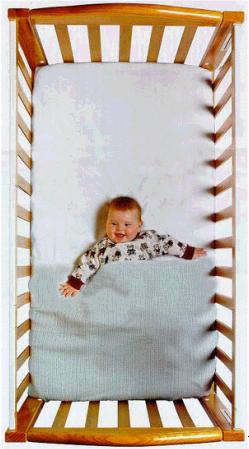

To prevent infant deaths due to soft bedding, the U.S. Consumer Product Safety Commission, the American Academy of Pediatrics, and the National Institute of Child Health and Human Development are revising their recommendations on safe bedding practices when putting infants down to sleep. Here are the revised recommendations to follow for infants under 12 months:

For Your Baby |
|
| U.S. Consumer Product Safety Commission Web site: www.cpsc.gov 1-800-638-2772 | American Academy of Pediatrics Web site: www.aap.org | National Institute of Child Health and Human Development "Back to Sleep" Campaign 1-800-505-CRIB |